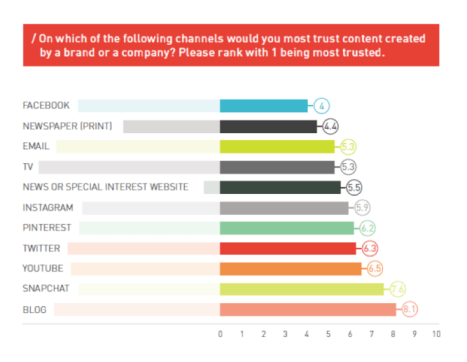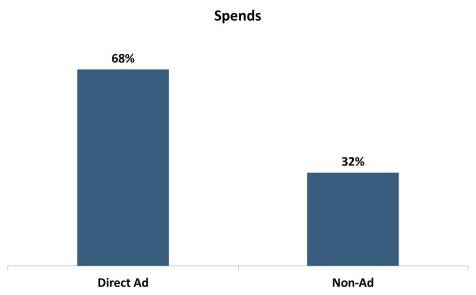(Originally posted 7/27/2015)
1) Print, internet, search engines, social media…what do people use most for search?
That’s a question that many small businesses ask regularly. And the numbers are constantly evolving. To offer the most up-to-date detailed answer to that question, the Local Search Association posed that question to the public, and included the results in their 2014 year end report. You can see a snapshot of the results here @ LSAInsider.com.
What it tells us is the following:
- The search method used depends on the type of business the consumer is searching for.
- Print yellow pages are not completely dead, (maybe life-support is a better description.)
- Store circulars still rule for grocery stores.
- Social media and review websites are a legitimate source for search results.
- Search engines are the strongest overall source of search results for consumers.
Ok, so what should you do with this information? If you are a small business, don’t hold on to your print yellow pages just because it’s familiar. Don’t drop them altogether either. YP’s remain a legitimate help for a couple of business segments. It’s just that in most of those cases search engines still beat them. Ask for help to improve your organic search results and definitely ask for help in crafting a quality pay-per-click campaign. You can manage those yourself as well, but they take time and expertise. And don’t overlook social media and review sites for their search value as well. They are a growing player in search overall, and are preferred by some consumers for certain categories.
And what do you do with this information if you are a marketing provider? You should know that all searches are not the same. Acknowledge that print YP’s while loosing value, still provide some results. Know where digital opportunities may benefit customers the most. Some categories may benefit greatly with a quality SEM campaign, and others may need to beef up their social media presence in order to improve search from that direction. And don’t overlook the overall growth of social media in regards to search.
2) Facebook and Twitter continue to grow as sources of news.
Facebook and Twitter continue to be growing “go-to” channels for news consumption for a majority of their users. More than 60% of Facebook and Twitter users said they use these platforms to access news, a 10% jump since 2013. Although Facebook is the larger of the two social networks, Twitter is the leader of the two in following “breaking news. Facebook is also a “trusted source” in delivering news to millennials and younger age groups. According to a recent study conducted by the Acquity Group, millennials placed greater trust in the news they found on Facebook than that found in print newspapers. And it may be no surprise that baby-boomers still placed greater trust in legacy media. You can see more on the results of this study here @ Digiday.
What does this mean to small businesses? It means that Facebook and Twitter are about much more than puppy videos, mundane daily updates, and a source for announcing social gatherings. A real audience accesses these channels, and well placed advertising messages hit on these networks hits a relevant audience. Advertising on social media channels is different than simply transferring a classified or newspaper ad to the media. You can ask for some expert guidance, or go to Facebook or Twitters customer service sections and learn more about how to reach these connected audiences.
What does this mean to local media providers? See the previous statement. If you are providing advertising to small businesses, learn more about how social media works, how the audience interacts with it, and what types of marketing are most effective.
3) Online listings, which ones are the most important?
There are literally, 100’s of online listing, or directory, sites. As a small business, do I have to be on all of them? The answer to that is probably no. But which ones you “shouldn’t” be on I would be hesitent to say. And likely, your business information will end up on them anyway thru web crawlers, 3rd party data sharing, and social media pages (this last one you will want to watch.)
So what does a small business need to do about these listings sights? You need to make sure the information on them is 100% accurate, and consistent across the board. Anything less starts to harm your ability to maximize your search ranking when you deserve it. There are 4 major data compilers that distribute to a vast number of listing companies. Making sure these compilers have your accurate information is easy but you will have to work thru a 3rd party to insure it is done properly. You can talk to your digital agency or your local media provider about that. There are a small handful of listing companies that really drive results, and are somewhat destinations by themselves. Directories such as Google + and Yelp should be paid close attention to. The best practice is for the small business to claim (or verify) listings on these directories directly. Doing it yourself will allow you to own the information and know how it got there. If you have someone do it for you, make sure you work closely with them so you will always know the correct path to revise. Once claimed, the listing should be enhanced…or added to. You can add photos, information about your business, business hours, almost anything the directory will allow. You should also invite others to comment on your store or business on these sites. Search engines love fresh content, and robust content. The more content, and the fresher the content, the better search results you will be able to achieve. You can see more on this, plus the 7 directory listing sites that you should impact first, here @ VerticalResponse.com/blog.
What does this mean to me if I am a small business owner? It means you can take control of your online directory listings today. You can take steps to start improving your overall search rsults and “find-ability” on the web. What does this mean if I am a local media provider? It means that directory listings should be something to be paid attention to, they can morph and change without the business knowing and providing a level of reputation intelligence to keep watch over the accuracy of these listings is the bare minimum level of service you should be providing.
4) Hello Jeff…take a step back Sam.
So, to start out, no disrespect meant towards Mr. Walton. It’s just that Amazon is now larger than Walmart.
This means little to small businesses right? I mean neither one of these companies is even remotely close to being considered a “small business.” Not so fast…while this does refer to the market cap of both companies (not number of employees, number of locations, or number of wigits either one sells), it also speaks to how the market and the world is valuing their overall business model. And it says that the world is valuing Amazon’s model a little higher than that of Walmart these days. It’s a seminal moment that you will look back on some time in the future, and be able to say you saw the shift occurring, right as it was happening.
What does this mean to small business? It means that purchasing over the web, and delivery options matter to the public. It means that if you are not looking at e-commerce right now, maybe you should be, at least reviewing your options for the future. And what does this mean for local advertising providers? It means that your clients have competitors doing business in new ways, and you’ll have to be aware of them to help your current clients. It also means that you should learn more about e-commerce options that your clients may want to select from, to help them make their decision at the right time.
Check out the story, here on Quartz.
5) What’s the definition of a “small” business?
What do a single-proprietor business, a lone plumber for instance, have in common with a 300 employee manufacturer of plumbing fixtures that sells wholesale to the public? Well, they both might be considered small businesses. In truth, while there is a specific definition of what defines a business as small, there are actually multiple specific definitions that are not always the same. Australia defines it differently than does Europe, and the US has several varying definitions, all with some overlapping commonality. For our world, we might be able to summarize a small business as the following: less than 500 employees, has a specific physical customer-facing location, and has a B2C business model.
What does this mean to me if I am one of these small business owners? It means you are among a formidable crowd, nearly 5 million of you in fact. Small businesses are starting to get more attention than ever, and there is now becoming an entire marketing industry that wants to focus on your needs. If you are a marketing services provider, this means that your potential customers are vast, but it also means that you need to be very much on top of your game in order to help small businesses with their marketing needs. Find more on this here @ StreetFightMag.
So now it’s time for me to work a little harder to get back on top of my game, thanks all…until the next post.















